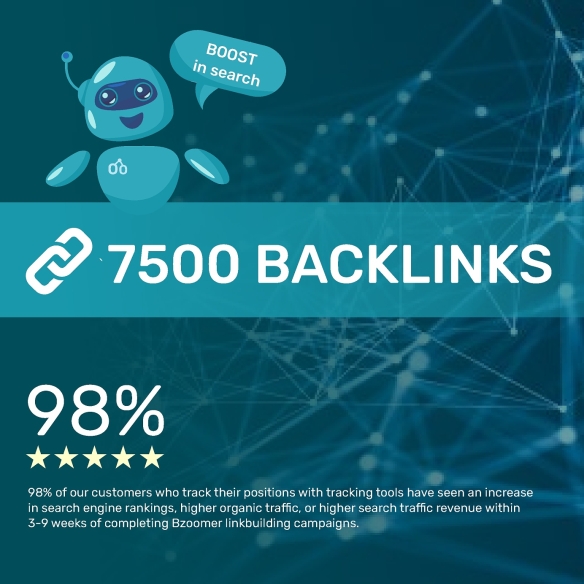Alcohol addiction is a serious and pervasive issue that affects millions of people across the globe. When someone struggles with alcohol addiction, their relationship with alcohol goes beyond occasional drinking — it becomes a chronic condition that impacts health, relationships, work, and life purpose. The good news: recovery is possible. In this article we will explore treatment options, how to begin the journey to recovery, and practical steps toward healing.
1. Understanding Alcohol Addiction
Before diving into treatment options, it’s critical to understand what alcohol addiction really means. The term “alcohol addiction” refers to a condition in which the individual continues to consume alcohol despite negative consequences, experiences cravings, increased tolerance, and often withdrawal symptoms when alcohol use is reduced or stopped. According to sources, alcohol use disorders are medically recognised and can be chronic and relapsing in nature.
Key features of alcohol addiction include:
-
A strong urge or craving to drink
-
Loss of control when drinking (more or longer than intended)
-
Continued drinking despite harm to health, work, relationships
-
Need for increasing amounts of alcohol to feel the same effect (tolerance)
-
Experiencing withdrawal symptoms when alcohol use is stopped or reduced
Understanding that alcohol addiction is not simply a matter of willpower, but often involves changes in brain chemistry, behaviour and environment, is the first step toward recovery.
2. Why Treatment Matters
Without intervention, alcohol addiction can lead to severe health problems: liver disease (including cirrhosis), cardiovascular issues, pancreatitis, brain damage (such as Wernicke-Korsakoff syndrome), weakened immune function, and increased risk of various cancers.
Furthermore, untreated addiction often burdens families, relationships and society at large.
Because alcohol addiction affects the brain’s reward pathways, cognitive control and the body’s physical dependency systems, professional treatment significantly increases the chances of a sustainable recovery.
3. Treatment Options for Alcohol Addiction
Here are the main categories of treatment options available for alcohol addiction:
3.1 Medically-Assisted Treatment (Medication-Assisted)
Medication can play a crucial role in treating alcohol addiction, especially when combined with therapy and support networks. Some medications approved in the U.S. for Alcohol Use Disorder (AUD) include:
-
Naltrexone – which blocks the rewarding effects of alcohol and may reduce cravings.
-
Acamprosate – which may help restore brain chemistry after alcohol cessation and ease discomfort during post-acute withdrawal.
-
Disulfiram (Antabuse) – which causes an unpleasant physical reaction when alcohol is consumed, thus acting as a deterrent.
These medications are typically overseen by qualified medical personnel, who can determine suitability, dosage, side-effects, and monitoring.
3.2 Behavioral Therapies and Counseling
Behavioral therapies form the backbone of alcohol addiction treatment. They address the psychological, emotional and behavioural aspects of drinking. Some common therapies include:
-
Cognitive-Behavioural Therapy (CBT): Helps identify and change negative thought patterns and behaviours related to alcohol.
-
Motivational Enhancement Therapy (MET): Boosts the internal motivation for change and helps someone engage in treatment.
-
Family Therapy: Involves support system and addresses relationship dynamics, communication and relational stressors.
-
Group Counseling / Support Groups: Provides peer support, accountability and a sense of community. Many programmes use group therapy as a core component.
3.3 Detoxification and Inpatient/Outpatient Treatment
-
Detoxification (Detox): For individuals with high levels of physical dependence or who are experiencing withdrawal, medically supervised detox is essential. Suddenly stopping alcohol (“cold turkey”) without medical supervision can be life-threatening.
-
Inpatient Treatment (Residential Rehab): The patient resides at a treatment facility for a period of time (30, 60, 90 days or more). Intense support, structured daily schedule, therapy, group work and often holistic care.
-
Outpatient Treatment: The patient lives at home but attends regular therapy, counselling and support sessions. Suitable for people with less severe issues or strong external support networks.
3.4 Peer Support & Aftercare
Recovery from alcohol addiction is rarely a one-and-done event. After initial treatment, ongoing support dramatically increases success rates.
Peer-based programs include:
-
Alcoholics Anonymous (AA): A well-known 12-step programme focused on abstinence and peer support.
-
SMART Recovery: A science-based approach emphasising self-empowerment and cognitive tools.
-
Secular alternatives like LifeRing or SOS (Secular Organisations for Sobriety) for those who prefer non-spiritual frameworks.
Aftercare also includes relapse prevention planning, sober living environments, continued counselling or therapy, and connecting with a supportive community.
4. How to Start Your Journey: Practical Steps
Starting treatment for alcohol addiction can feel overwhelming. Here is a step-by-step guide to help you begin:
Step 1: Acknowledge the problem
The first and often hardest step is admitting to yourself that alcohol addiction is affecting your life and you need help. Reflect on the indicators: are you drinking more than intended? Does alcohol cause problems at work or home? Have you tried to cut back and failed?
Step 2: Seek a professional evaluation
Contact a healthcare provider, addiction specialist, or treatment centre. A professional evaluation can assess severity, physical health, mental health conditions, and determine appropriate next steps.
Step 3: Choose the level of care that fits your situation
Based on the evaluation, decide whether inpatient, outpatient, or detoxification care is needed. Consider your physical health, risk of withdrawal, environment, support network, and resources.
Step 4: Begin a treatment programme
Once care is chosen, engage in treatment: medication (if appropriate), therapy, counselling, support groups, lifestyle changes. Be open and honest, attend sessions and follow the plan.
Step 5: Build a supportive environment
Changing your social context can be crucial. Avoid high-risk situations (e.g., places tied to drinking), connect with sober friends or peer groups, involve family or friends whether in therapy or as companions.
Step 6: Plan for aftercare and relapse prevention
Create a plan for maintaining sobriety or controlled drinking (depending on your goal). Identify triggers (stress, social pressure, negative emotions), develop coping strategies (exercise, hobbies, mindfulness), schedule regular check-ins (therapy or support group), and set milestones.
Step 7: Be patient and kind to yourself
Recovery from alcohol addiction is often a long-term process. Setbacks may happen. What matters is persistence, adapting your plan, learning from slips, and recommitting. Celebrate progress — even small steps count.
5. Common Challenges and How to Overcome Them
Even with a solid plan, several challenges can hinder recovery from alcohol addiction. Knowing them ahead of time helps you be prepared.
5.1 Withdrawal and Physical Dependency
When someone with significant alcohol dependence stops drinking, physical withdrawal symptoms may appear: tremors, anxiety, nausea, seizures, hallucinations, or severe forms like Delirium Tremens (DTs).
Tip: Ensure detox is medically supervised. Don’t attempt abrupt cessation alone if your dependency is high.
5.2 Mental Health Co-occurrence
Many people with alcohol addiction also suffer from depression, anxiety, PTSD or other mental health disorders. Alcohol may have been used as self-medication.
Tip: Ensure comprehensive treatment that addresses both addiction and mental health (dual diagnosis approach).
5.3 Social and Environmental Triggers
Triggers can include social gatherings with alcohol, stressful life events, or friends/family who drink heavily.
Tip: Modify your environment: avoid bars or events early on, inform friends/family of your goals, find alternative activities (sports, hobbies, volunteering).
5.4 Fear of Loss of Identity or Pleasure
For many, drinking has been tied to socializing, stress relief, identity. Giving it up can feel like giving up part of oneself.
Tip: Redefine your identity beyond drinking. Explore new interests, reconnect with values, build a life that supports your recovery.
5.5 Relapse
Relapse is common in chronic conditions like alcohol addiction. It doesn’t mean failure — it means you may need to adjust your plan.
Tip: Have a relapse prevention plan, recognize early warning signs (craving, skipping meetings, isolating), reach out quickly for support, learn from the relapse and recommit.
6. Measuring Success and What Recovery Looks Like
Recovery from alcohol addiction doesn’t always mean perfect or permanent abstinence (although that is often the goal). It means improved health, restored relationships, renewed purpose, and sustainable change. Indicators of successful recovery might include:
-
Reduced or eliminated alcohol consumption
-
Improved physical health (better sleep, liver markers, blood pressure)
-
Better mental health (less anxiety/depression, improved mood)
-
Restored relationships and social life
-
Ability to function at work or in daily life without alcohol dependency
-
Engaging in meaningful activities and purpose beyond drinking
Setting measurable milestones helps: for example, attending a certain number of therapy sessions, maintaining a streak of sobriety, joining peer-support meetings weekly, rebuilding finances, or repairing relationships.
7. Key Takeaways
-
Alcohol addiction is a treatable, serious condition that affects the brain, body and life as a whole.
-
Early acknowledgement and professional evaluation make a big difference.
-
A powerful treatment approach is multi-modal: medication + therapy + peer support + lifestyle change.
-
Recovery is not linear, and setbacks don’t equal failure, they equal adaptation.
-
Building a supportive environment, addressing co-occurring mental health issues, and staying engaged with aftercare are critical for long-term success.
Conclusion
Beginning the journey to recovery from alcohol addiction may feel daunting, but the path exists and many have walked it successfully. With the right help and plan in place, you can reclaim your life from alcohol addiction and build a future rooted in health, purpose and connection. If you or someone you care about is facing alcohol addiction, know that help is available, you are not alone, and the first step is often the hardest – but it is also the most important.
References & Further Reading
For a comprehensive guide on alcoholism and alcohol addiction, including treatment options and risk factors, see this resource: Addiction Helpline America — “A Comprehensive Guide to Alcoholism”.


